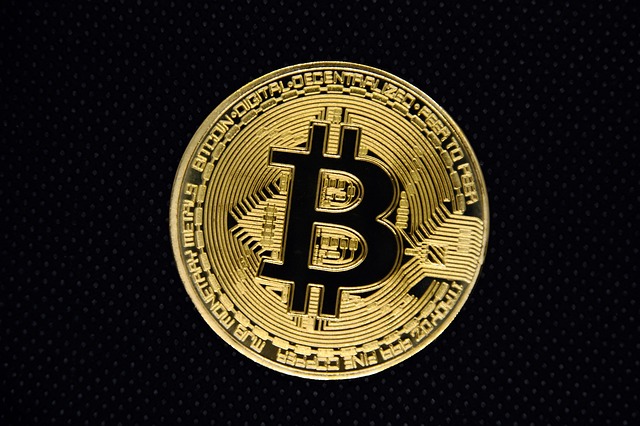The cryptocurrency market's extreme volatility poses significant risks due to decentralized finance (DeFi)'s unique characteristics, such as low liquidity and smart contract governance. DeFi, however, offers innovative risk management strategies like automated market makers, stablecoins, and dynamic pricing algorithms. To thrive, DeFi protocols and investors must adopt diverse approaches like spreading investments across cryptocurrencies, using smart contracts with dynamic pricing, integrating risk assessment tools, and leveraging decentralized exchanges for greater control over trading pairs. Case studies show leading DeFi platforms employing real-time fee structures and advanced algorithmic models to mitigate volatility risks, thereby unlocking DeFi's full potential while safeguarding user funds.
In the dynamic landscape of cryptocurrency, market volatility poses a significant challenge for investors. This article explores comprehensive strategies for managing this risk, with a focus on the transformative role of Decentralized Finance (DeFi). We delve into innovative DeFi tools revolutionizing risk management, offering new avenues to mitigate volatility exposure. From practical strategies to real-world case studies, we uncover insights that empower investors to navigate crypto’s volatile waters, harnessing its potential while safeguarding their digital assets.
- Understanding Cryptocurrency Market Volatility: A Comprehensive Overview
- Decentralized Finance (DeFi): Revolutionizing Risk Management
- Strategies for Mitigating Volatility Risks in DeFi and Beyond
- Case Studies: Successful Volatility Risk Management in Cryptocurrency Markets
Understanding Cryptocurrency Market Volatility: A Comprehensive Overview

The cryptocurrency market is known for its extreme volatility, with prices fluctuating dramatically in a matter of hours or even minutes. This inherent instability poses significant risks to investors and can be attributed to various factors unique to decentralized finance (DeFi) and blockchain technology. One primary cause is the high liquidity and low trading volumes in many crypto assets, making them susceptible to sudden price swings driven by speculators or news events.
Moreover, DeFi’s decentralized nature eliminates traditional financial intermediaries, which often act as stabilizers. Instead, smart contracts and automated market maker protocols govern these markets, sometimes leading to abrupt changes in asset values. Understanding these dynamics is crucial for navigating the potential of decentralized finance while managing associated risks effectively.
Decentralized Finance (DeFi): Revolutionizing Risk Management

Decentralized Finance (DeFi) has emerged as a revolutionary force in the financial sector, offering new possibilities for risk management in the cryptocurrency market. By leveraging blockchain technology and smart contracts, DeFi platforms aim to create more transparent, accessible, and efficient financial systems. This innovative approach is transforming traditional risk mitigation strategies by removing intermediaries and providing users with greater control over their assets.
DeFi’s potential lies in its ability to democratize access to financial tools, enabling investors to participate in complex markets without the need for centralized institutions. Automated market makers, stablecoins, and various lending/borrowing protocols are some examples of DeFi applications that help stabilize prices and reduce volatility. These tools offer alternative risk management strategies, allowing investors to navigate the cryptocurrency market with enhanced protection against sudden price fluctuations.
Strategies for Mitigating Volatility Risks in DeFi and Beyond

In the dynamic landscape of decentralized finance (DeFi), market volatility presents a significant challenge but also offers opportunities for innovative risk management strategies. To navigate this volatile environment, DeFi protocols and investors alike must employ robust tools to mitigate risks effectively. One key approach is diversification, spreading investments across various cryptocurrencies and decentralized applications (dApps) to reduce exposure to any single asset’s volatility. Additionally, utilizing smart contracts that implement dynamic pricing algorithms can help stabilize asset values by automatically adjusting based on market conditions.
Another effective method is the integration of risk assessment tools and predictive analytics. By leveraging historical data and advanced algorithms, DeFi platforms can anticipate market movements and adjust their strategies accordingly. This proactive approach allows for better-informed decisions, such as implementing stop-loss orders or dynamic collateral management to protect against sudden price drops. Moreover, decentralized exchanges (DEXs) offer greater control over trading pairs, enabling users to curate more stable and less volatile portfolios, thereby enhancing overall risk resilience in DeFi and beyond.
Case Studies: Successful Volatility Risk Management in Cryptocurrency Markets

In recent years, decentralized finance (DeFi) has emerged as a game-changer in the cryptocurrency market, promising to revolutionize traditional financial systems. However, alongside its potential benefits, DeFi also presents significant volatility risk management challenges. Case studies of successful volatility risk management within the crypto space highlight innovative strategies employed by leading platforms.
For instance, some DeFi protocols implement dynamic fee structures that adjust based on network congestion and price swings. This real-time pricing mechanism helps mitigate the impact of volatility on users’ investments. Additionally, advanced algorithmic models predict market trends, enabling proactive risk mitigation strategies such as automated portfolio rebalancing or hedging against price drops. These examples demonstrate how DeFi platforms can harness technology to navigate and manage market volatility, thereby unlocking the full potential of decentralized finance while safeguarding user funds.
The cryptocurrency market’s inherent volatility presents both challenges and opportunities. By understanding the forces driving price fluctuations and adopting innovative approaches, such as decentralized finance (DeFi), participants can navigate this dynamic landscape more effectively. This article has explored various strategies for managing volatility risks in DeFi and traditional financial systems, underscoring the importance of adaptability and knowledge. As the cryptocurrency space continues to evolve, mastering volatility risk management will be a key differentiator for investors and institutions alike, unlocking the full potential of decentralized finance and its transformative power.
